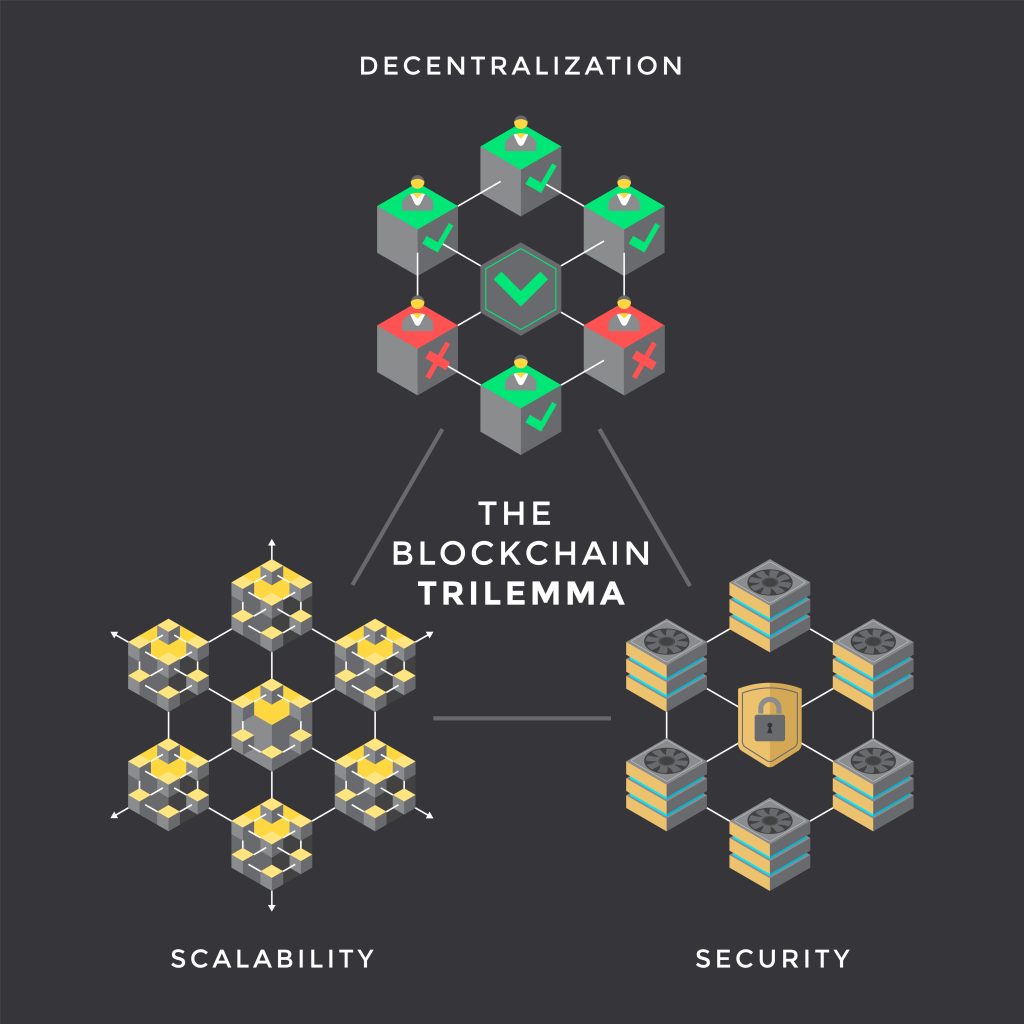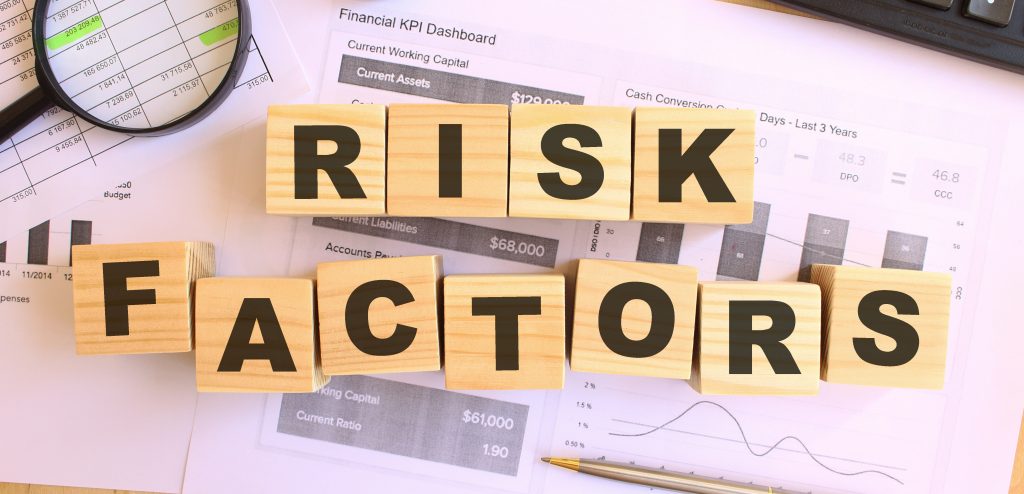Blockchain technology has been making waves across various industries, from finance and supply chain management to gaming and healthcare. Its decentralized and secure nature has opened up new avenues for innovation and collaboration. However, as the adoption of blockchain technology grows, the need for improved scalability becomes more and more evident. That’s where layer 2 scaling solutions come in – they hold the potential to address this issue and take blockchain technology to new heights.
The Blockchain Trilemma


The “blockchain trilemma” is a concept often discussed in the world of decentralized technology. It highlights the three core aspects of any blockchain: security, decentralization, and scalability. The trilemma suggests that a blockchain can only excel in two of these areas, leaving the third one compromised.
In simple terms, if a blockchain aims to be highly secure and decentralized, it often struggles with scalability. On the other hand, if it’s designed to be highly scalable and secure, it may sacrifice decentralization. This inherent trade-off has led to the development of layer 2 scaling solutions, which strive to maintain the desired balance between security, decentralization, and scalability.
Understanding Layer 1 and Layer 2 Blockchains
Before we dive into layer 2 scaling solutions, let’s first understand the distinction between layer 1 (L1) and layer 2 (L2) blockchains.
Layer 1, or the base layer, refers to the foundational blockchain platforms such as Ethereum and Bitcoin. These platforms process transactions and store data on their respective chains. However, as the number of users and applications on these platforms grows, they face challenges in terms of transaction speed, throughput, and network congestion.
Layer 2, in contrast, is an additional layer built on top of the base layer to enhance its scalability. These solutions address the limitations of the base layer by processing transactions and computations off-chain, thereby reducing the load on the primary network. Once the off-chain processing is complete, the results are posted back to the main chain. Examples of layer 2 scaling solutions include Rollups, Lightning Network, and Plasma.
By leveraging layer 2 solutions, it becomes possible to increase transaction throughput and speed while maintaining the security and decentralization aspects of the underlying layer 1 blockchain.
The Need for Layer 2 Solutions
As the adoption of cryptocurrencies and blockchain-based applications continues to surge, the demand for efficient and scalable networks has grown exponentially. Layer 1 blockchains, while revolutionary and robust, face limitations in terms of transaction throughput, latency, and fees. These limitations can hinder the growth and adoption of blockchain technology on a global scale.
For instance, Ethereum, one of the most popular blockchain platforms, can only handle around 30 transactions per second (tps). In comparison, traditional payment networks like Visa can process thousands of transactions per second. This stark difference underscores the need for layer 2 scaling solutions that can handle a higher volume of transactions while maintaining the core tenets of blockchain technology.
Layer 2 solutions are designed to alleviate the stress on the base layer by moving transactions and computations off-chain. This approach enables faster and cheaper transactions, making blockchain technology more accessible and practical for everyday use. As a result, the adoption of layer 2 solutions has become critical for the long-term success and viability of blockchain networks.
Benefits of Layer Two Scaling Solutions
Layer 2 scaling solutions offer several key advantages that can significantly improve the performance and usability of blockchain networks:
- Increased transaction throughput: Layer 2 solutions can handle a much higher volume of transactions than traditional layer 1 blockchains, making them more suitable for widespread adoption and use in various industries.
- Reduced transaction fees: By moving transactions off-chain, layer 2 solutions can help reduce network congestion and lower transaction fees. This makes it more affordable for users to interact with blockchain-based applications and services.
- Faster transaction times: Off-chain transactions on layer 2 networks can be processed more quickly than on-chain transactions, resulting in faster transaction times and a more seamless user experience.
- Enhanced privacy: Some layer 2 solutions, such as zk-Rollups and Aztec Protocol, provide advanced privacy features that enable confidential transactions and data protection. This added layer of privacy can attract more users and businesses to adopt blockchain technology.
- Preservation of security and decentralization: Layer 2 solutions maintain the security and decentralization of the underlying layer 1 blockchain by periodically posting the results of off-chain transactions back to the main chain. This ensures that the core principles of blockchain technology are not compromised.
By addressing the limitations of layer 1 blockchains and offering significant benefits, layer 2 scaling solutions have the potential to propel the adoption of blockchain technology into the mainstream, driving innovation and transforming industries across the globe.
How Layer 2 Scaling Solutions Work
Layer 2 scaling solutions operate on the principle of moving transactions and computations off the base layer, or layer 1 blockchain, and processing them on a separate, off-chain network. By doing so, they can significantly improve the performance and capacity of the underlying blockchain. Here’s a brief overview of how layer 2 scaling solutions work:
- Off-chain transactions: Users initiate transactions on the layer 2 network, which operates independently from the layer 1 blockchain. These transactions are processed, validated, and stored off-chain, reducing the load on the base layer.
- Aggregating transactions: Layer 2 solutions often employ techniques like batching or rollups to aggregate multiple transactions into a single transaction or proof. This helps to further optimize the scalability of the network.
- Periodic on-chain settlement: After processing off-chain transactions, layer 2 networks periodically commit a compressed version of the transactions back to the layer 1 blockchain. This ensures that the final state of the off-chain transactions remains secured and verifiable on the main chain.
- Dispute resolution: Layer 2 networks typically include mechanisms for dispute resolution in case of any disagreements or inconsistencies between the off-chain and on-chain data. These mechanisms help to maintain the integrity and security of the network.
By utilizing these techniques, layer 2 scaling solutions can significantly enhance the performance and usability of blockchain networks without compromising their security and decentralization.
Rollups: The Preferred L-2 Solution for Scaling Ethereum Blockchain
Among the various layer 2 scaling solutions available, rollups have emerged as a popular and effective method for scaling Ethereum, the second-largest blockchain platform by market capitalization. Rollups are a type of layer 2 solution that bundles multiple transactions into a single proof, which is then posted back to the Ethereum main chain. This approach enables greater transaction throughput while maintaining the security and decentralization of the Ethereum network.
There are two main types of rollups:
- Optimistic Rollups: Optimistic rollups rely on the assumption that off-chain transactions are valid and honest, requiring minimal on-chain verification. If a dispute arises, a challenge period allows users to submit fraud proofs, invalidating any dishonest transactions. Optimistic rollups can significantly increase transaction throughput and reduce fees, making them an attractive option for scaling Ethereum.
- zk-Rollups: zk-Rollups utilize zero-knowledge proofs, a cryptographic technique that allows one party to prove the validity of a statement without revealing any specific information about the statement itself. By using zero-knowledge proofs, zk-Rollups can compress and validate transactions off-chain, providing higher transaction throughput, lower fees, and increased privacy compared to optimistic rollups.
Both optimistic and zk-Rollups are actively being developed and implemented on the Ethereum network. As the Ethereum community finally transitioning to Ethereum 2.0, a more scalable and efficient version of the platform, rollups are expected to play a crucial role in addressing the network’s current scalability challenges and improving the overall user experience.
Prominent Layer 2 Blockchain Projects
As the demand for scalable blockchain solutions has grown, several prominent layer 2 projects have emerged, each focusing on different aspects of layer 2 scaling. Here are some notable examples:
- Polygon (formerly Matic Network): Polygon is a multi-chain scaling solution for Ethereum that aims to provide a framework for building and connecting Ethereum-compatible blockchains. It offers a range of layer 2 solutions, including Plasma, zk-Rollups, and Optimistic Rollups, allowing developers to choose the best scaling solution for their specific use case.
- Optimism: Optimism is a layer 2 scaling solution based on Optimistic Rollups. It focuses on enabling high throughput and low fees for Ethereum-based applications, with a particular emphasis on decentralized finance (DeFi) projects.
- Arbitrum: Arbitrum is another layer 2 scaling solution that leverages Optimistic Rollups. It offers a suite of tools and services designed to make it easy for developers to build and deploy scalable Ethereum applications with minimal changes to their existing code.
- zkSync: zkSync is a layer 2 scaling solution that utilizes zk-Rollups to provide fast, secure, and low-cost transactions on the Ethereum network. Its primary focus is on improving the user experience for payments and token transfers while maintaining a high level of security and privacy.
These projects, among others, showcase the diverse range of layer 2 scaling solutions available and the ongoing efforts to improve the scalability, efficiency, and usability of blockchain networks.
Risks and Considerations in Layer 2 Scaling Solutions


While layer 2 scaling solutions offer significant benefits, they also come with certain risks and considerations that users and developers should be aware of:
- Complexity: Layer 2 solutions often introduce additional complexity to the blockchain ecosystem, which can make it more difficult for users and developers to understand and navigate the space.
- Interoperability: As different layer 2 solutions employ different techniques and technologies, ensuring seamless interoperability between them can be a challenge. This may lead to fragmented ecosystems and potential inefficiencies in cross-chain transactions.
- Security: While layer 2 solutions strive to maintain the security of the base layer blockchain, the off-chain processing of transactions can introduce new attack vectors or vulnerabilities that need to be carefully managed and mitigated.
- Adoption: Layer 2 scaling solutions are dependent on widespread adoption by users, developers, and platforms in order to achieve their full potential. If adoption is slow or limited, the benefits of layer 2 scaling may not be fully realized.
Despite these challenges, the ongoing research and development in the layer 2 scaling space is expected to address many of these concerns, leading to more robust, secure, and efficient scaling solutions in the future.
The Bottom Line
Layer 2 scaling solutions are a promising approach to addressing the limitations of existing blockchain networks, enabling them to support a higher volume of transactions, accommodate more users, and facilitate a wider range of use cases. By leveraging techniques like off-chain processing, rollups, and sidechains, layer 2 solutions can significantly improve the performance and usability of blockchain networks without compromising their security and decentralization.
As the blockchain ecosystem continues to evolve and mature, layer 2 scaling solutions are expected to play a crucial role in driving the widespread adoption of blockchain technology and fostering the development of innovative applications and services built on top of these platforms.









